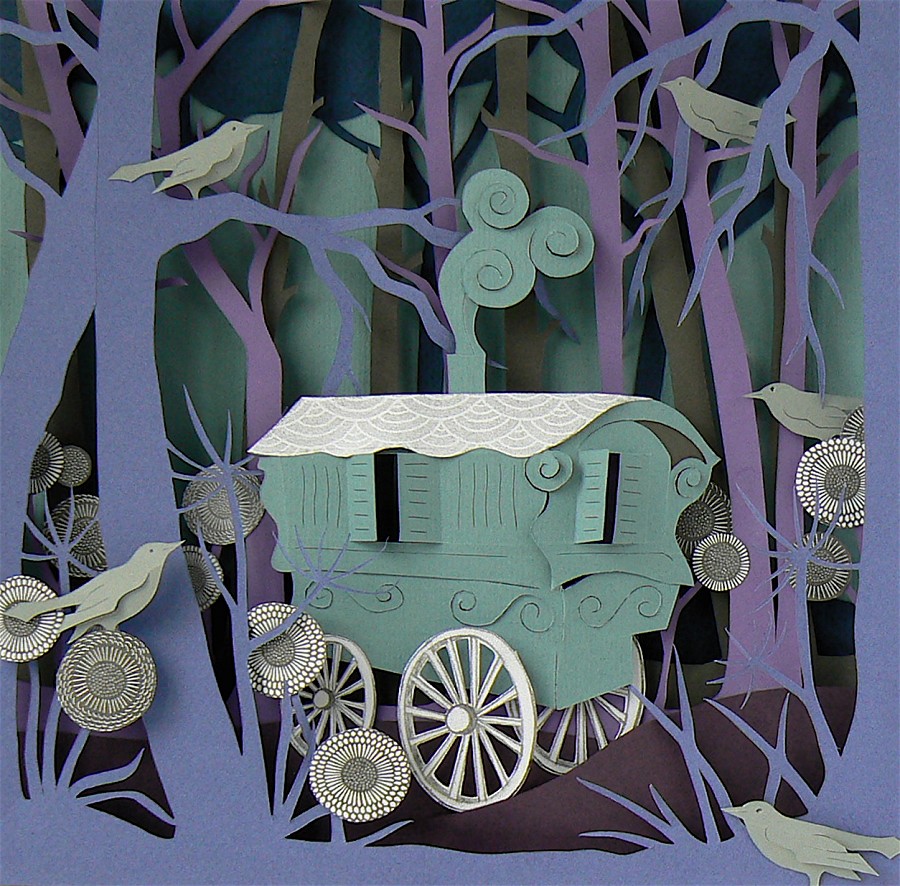I decided to do the first "Art History 101" post on Wassily Kandinsky's Concerning the Spiritual in Art, not only because it is an important piece of writing in Art History but because the Guggenheim Museum in New York just recently mounted a retrospective of his work. (Check out the New York Times Review)
Kandinsky wrote Concerning the Spiritual in Art in 1977. The book has two sections: "About General Aesthetic" and "About Painting". Kandinsky is certainly an "odd duck"- to look at his paintings is often to wonder what exactly he was trying to do. They seem quite simple, with lines and shapes in various colors, often with heavy use of the primary colors (red, yellow, blue). They also seem mildly erratic, completely abstract, and lacking in solid form. Kandinsky attempted to answer the "What is he doing?" question with Concerning the Spiritual in Art, and ended up writing a classic piece on painting theory.
To put it quite simply, Kandinsky was painting music (or attempting to). He wanted to dissolve the distinctions between music and painting, and was attempting to do so through the use of color and line. He felt that music was the only art form that truly expressed the soul, and wanted to achieve this in painting.
In "About General Aesthetic", Kandinsky discusses the matter of the "spiritual" in art. He talks about the forms that the progress of the spirit takes, notably the pyramid and the triangle. He felt that those that painted abstract images were truly expressing the "spiritual" in art, the "inner", while those whose painted realistically "sought the 'inner' by way of the 'outer'". He wrote of the work of the painter Henri Matisse, "He paints 'pictures,' and in these 'pictures' endeavours to reproduce the divine. To attain this end he requires as a starting point nothing but the object to be painted...and then the methods that belong to painting alone, colour and form." Kandinsky felt that the move towards abstraction in art was a move towards higher levels of spiritual development, or the "non-material".
It is at this point in the book that Kandinsky begins to talk about music, writing "With few exceptions music has been for some centuries the art which has devoted itself not to the reproduction of natural phenomena, but rather to the expression of the artist's soul, in musical sound." While music "needs no definite form for its expression", painting "is almost exclusively concerned with the reproduction of natural forms and phenomena", and that it was time for painting to move beyond it's current methods and "use her powers to a truly artistic end".
The second half of the book, "About Painting", is more practical than the first, concerning itself primarily with how color and form interact and work in paintings. He also talks a little about theory in this portion of the book, and I find interesting and helpful one passage in particular on the role of the spectator in viewing paintings:
"The spectator is too ready to look for a meaning in a picture- i.e., some outward connection between its various parts. Our materialistic age has produced a type of spectator or 'connoisseur,' who is not content to put himself opposite a picture and let it say its own message. Instead of allowing the inner value of the picture to work, he worries himself in looking for 'closeness to nature,' or 'temperament,' or 'handling,' or 'tonality,' or 'perspective,' or what not. His eye does not probe the outer expression to arrive at the inner meaning. In a conversation with an interesting person, we endeavour to get at his fundamental ideas and feelings. We do not bother about the words he uses, nor the spelling of those words, nor the breath necessary for speaking them, nor the movements of his tongue and lips, nor the psychological working on our brain, nor the physical sound in our ear, nor the physiological effect on our nerves. We realize that these things, though interesting and important, are not the main things of the moment, but that the meaning and idea is what concerns us. We should have the same feeling when confronted with a work of art."
Kandinsky was truly a visionary in his understanding of the direction of the movement of art and the issues confronting the artist and the viewer. Whether he was successful in transcending these issues in his paintings is a whole other issue entirely, but regardless Concerning the Spiritual in Art is an important book which is worth revisiting again and again. I had not read it in several years when I went to review it for this post, and found it more relevant and important to me now than it was before. I will end this "lesson" on Kandinsky's theories with one final quote from the last section in the book on "Art and Artists":
"The work of art is born of the artist in a mysterious and secret way. From him it gains life and being. Nor is its existence casual and inconsequent, but it has a definite and purposeful strength, alike in its material and spiritual life."
This post quotes from and is all about the book: Concerning the Spiritual in Art by Wassily Kandinsky, Translated with an introduction by M.T.H. Sadler, c. 1977 by Dover Publications, Inc. Mineola, NY








Why don't you tell us what each painting is called and what date it was painted on, that would really help with my fucking art homework!!!
ReplyDeleteits really good and helped me with my art homework a lot .i agree with the above comment BUT NO NAUGHTY LANGUAGE PLEASE!!!!!!!!!!OTHER THAN that theres so many new things ive learnt today....thats one bit of homework done........................thanks guys!!
ReplyDeletea loud o rubbish english please babes ......lol
ReplyDeletethis is ok but it would be good to know a bit more about the artist.
ReplyDelete